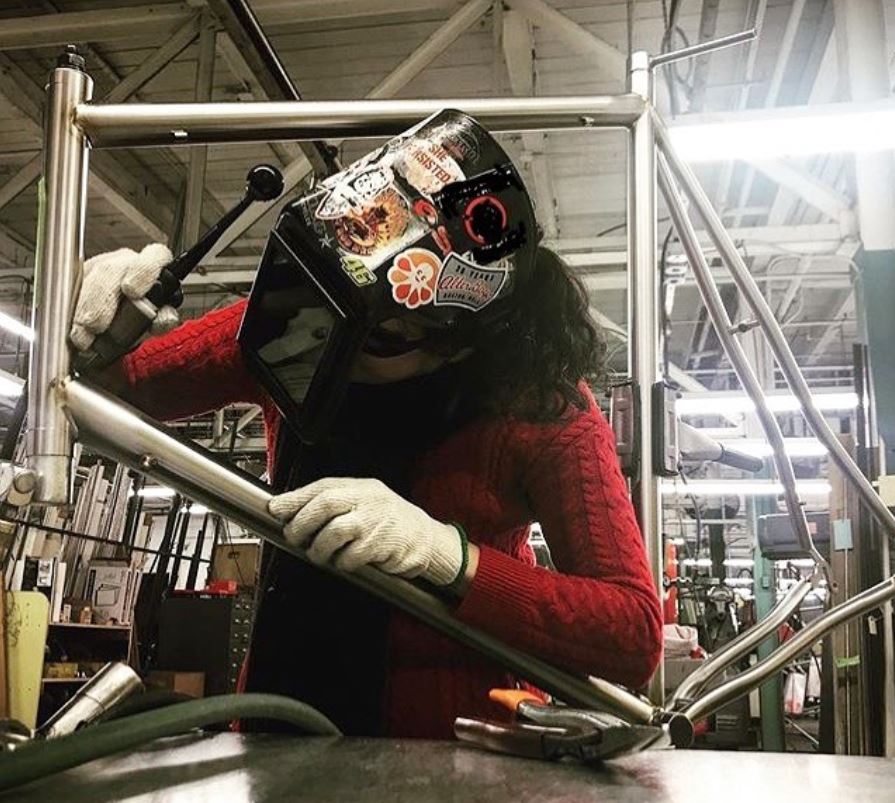Six tables form the circumference of the welding area. Unlike the back and forth, on-their-feet movement of the machinists, welders work more like laboratory scientists. Instead of operating multiple, massive machines all at once, they set up shop on a broad metal desk with all of their tools within arm’s reach. A torch, argon purge hose, different lengths and widths of filler rod, metal blocks that serve as heat sinks, clamps, and of course the welding mask are all there.
Welding desks are divided by heavily tinted plastic curtains to protect the eyes of passers-by from the bright light of the torch. It’s much quieter in welding, too. Music, talk radio, and podcasts play through headphones, not speakers. The arc flows from the torch with a whisper of argon gas. Desks are far enough away from each other that chatter happens only at the alignment table.
The welding department has a much different feel than machining, where metal is being cut, filed and sanded. Everything is clean in welding, including the bright white floor. In welding, everything gets cleaned in a two-stage acetone bath, then handled with white cotton gloves. Tools, fixtures, and surfaces are spic-and-span. They have to be.
The welder loads your pristine tubes in the frame jig once again so they can be tacked together. Small spot welds hold the tubes in place after it’s removed from the jig, making it easier to weld freehand.
With two nods of the head, the welding mask drops, shielding eyes from the piercing light. In the right hand, the torch, in the left, the filler rod. When the frame is properly purged, and the desired temperature is reached, the filler rod flows into the junction, where it melts and leaves a small round puddle. Each little droplet adds strength to the weld, a lifetime bond.
The finished weld looks so uniform that you might not realize the welders work in short increments, sometimes only a centimeter-at-a-time, before the frame has to be lifted, spun, flipped, or adjusted. It’s a testament to their skill and artistry that the finished product looks so smooth, like one continuous flow.
Considering a frame’s alignment is measured in thousandths-of-inches, the welder has to monitor the straightness of the frame throughout the process. Through frequent inspections, welders can make micro adjustments along the way, ensuring the straightest frames possible. The tightest tolerance, keeping the bottom bracket parallel to the top tube within 0.005”, is roughly the height of two pages of copy paper lying flat on your desk. The tighter the tolerance, the more predictably the bike will handle.
We take great pride in tight tolerances.
The welder will spend several hours on your frame and components. Upon completion, pending the final inspection of the master welder, a framebuilder takes it away for final machining and finishing.
This is part two of a four-part series on the Seven framebuilding process. Be sure to check out parts one, three, and four to learn the whole story.

